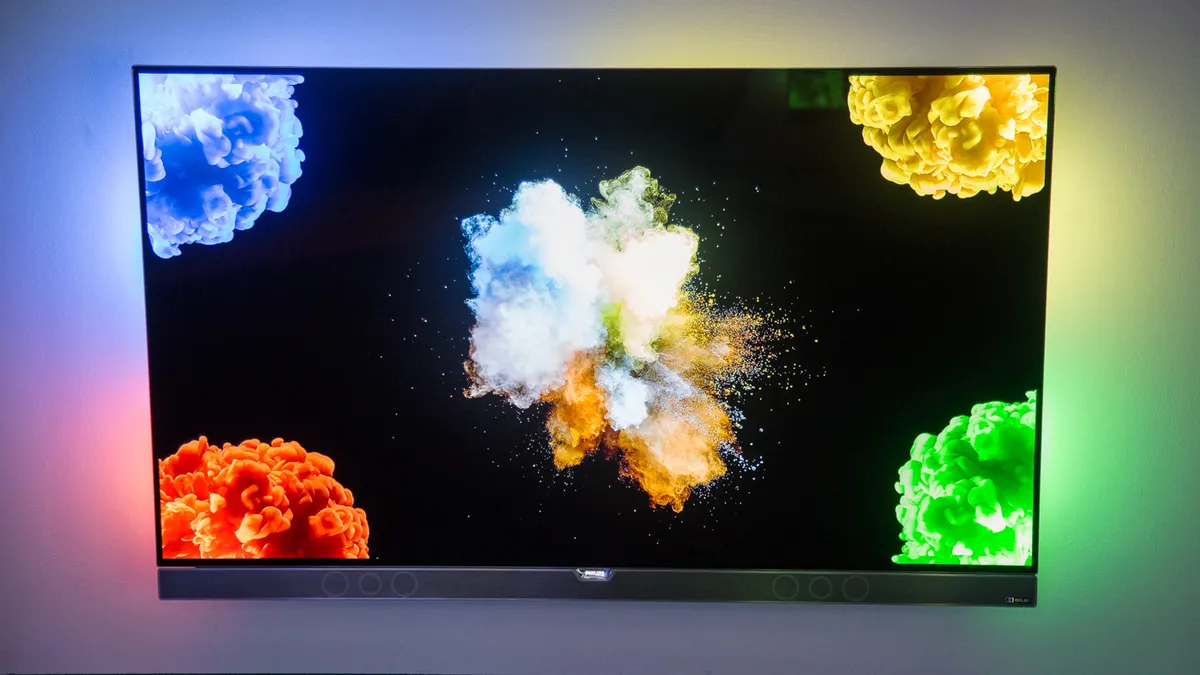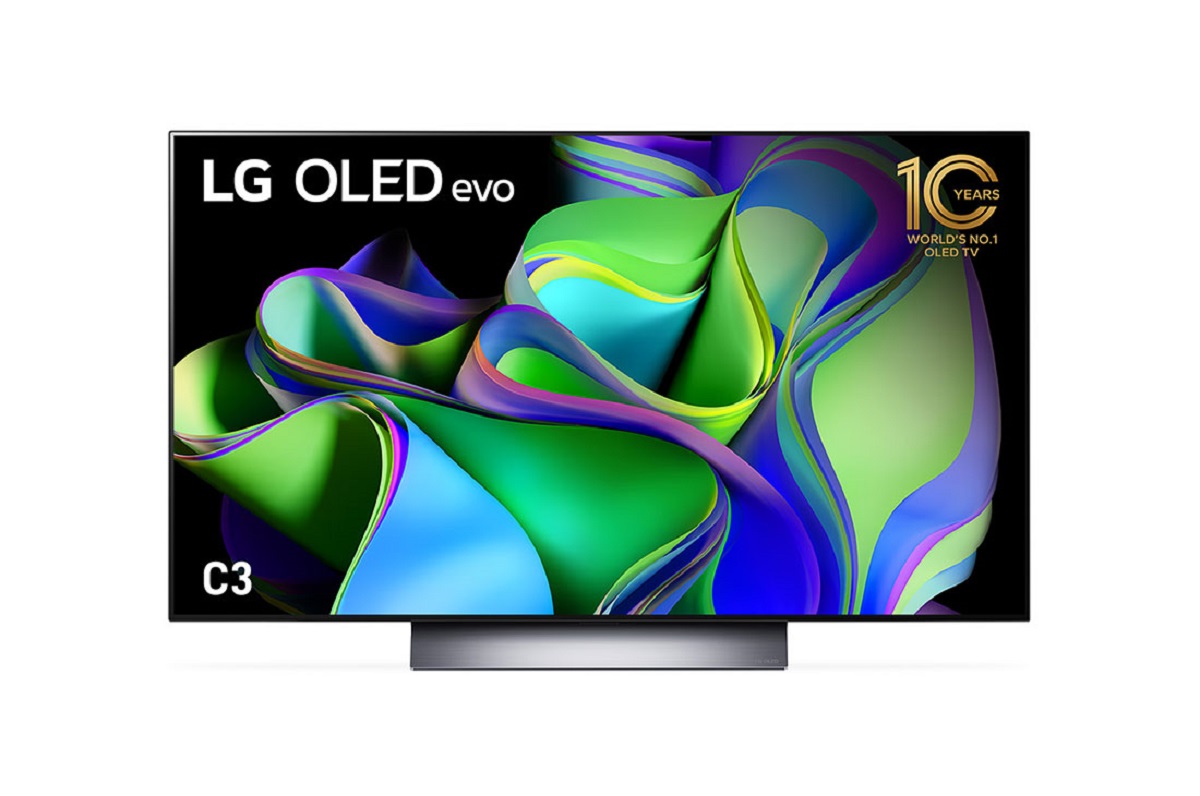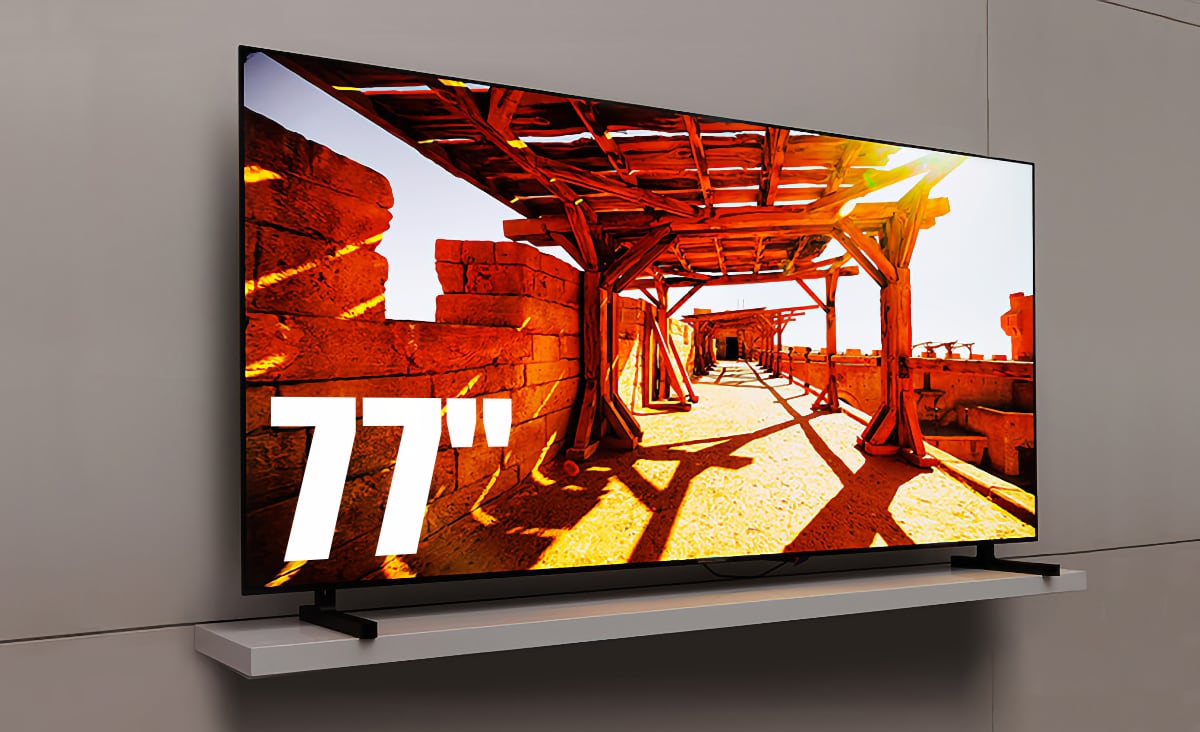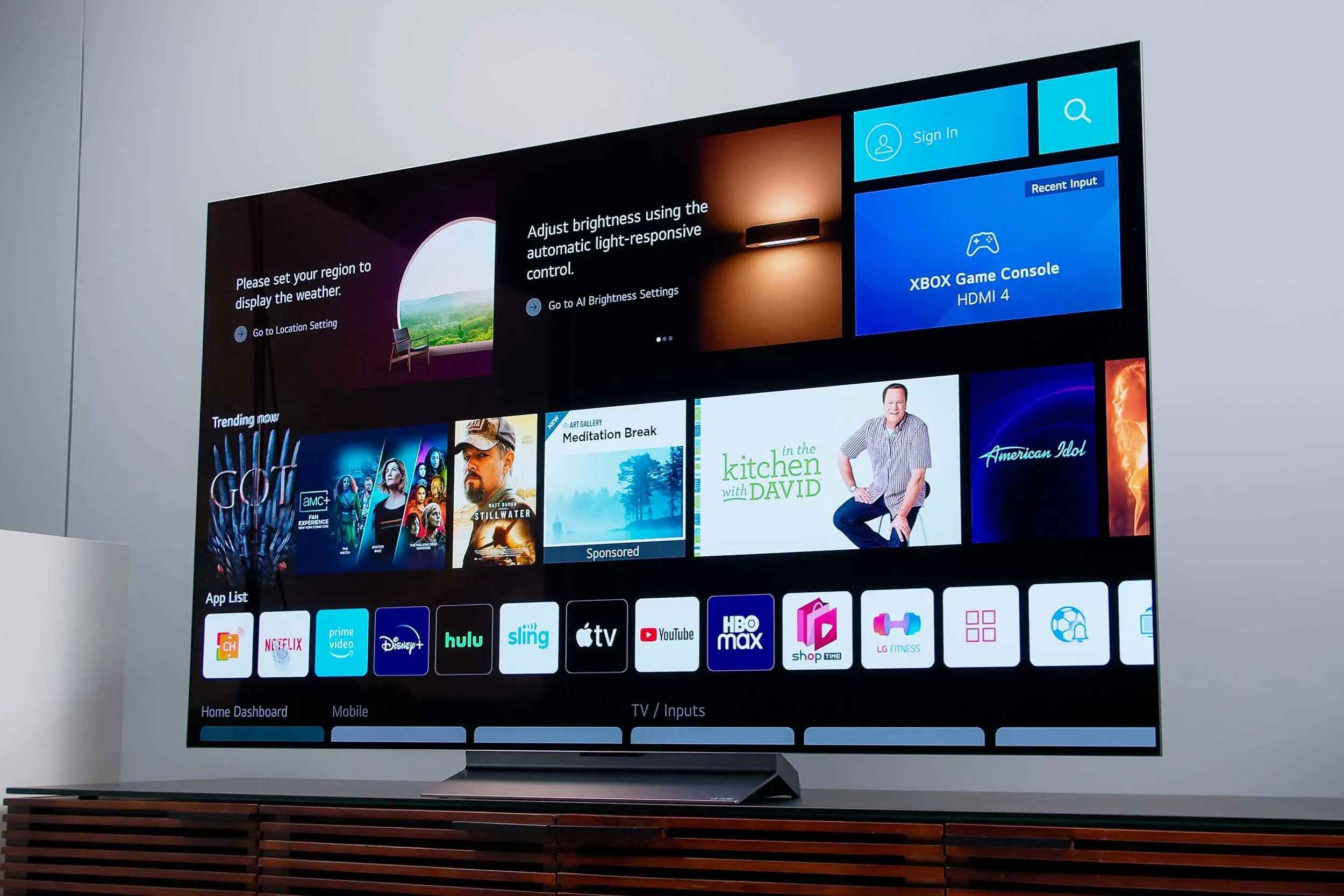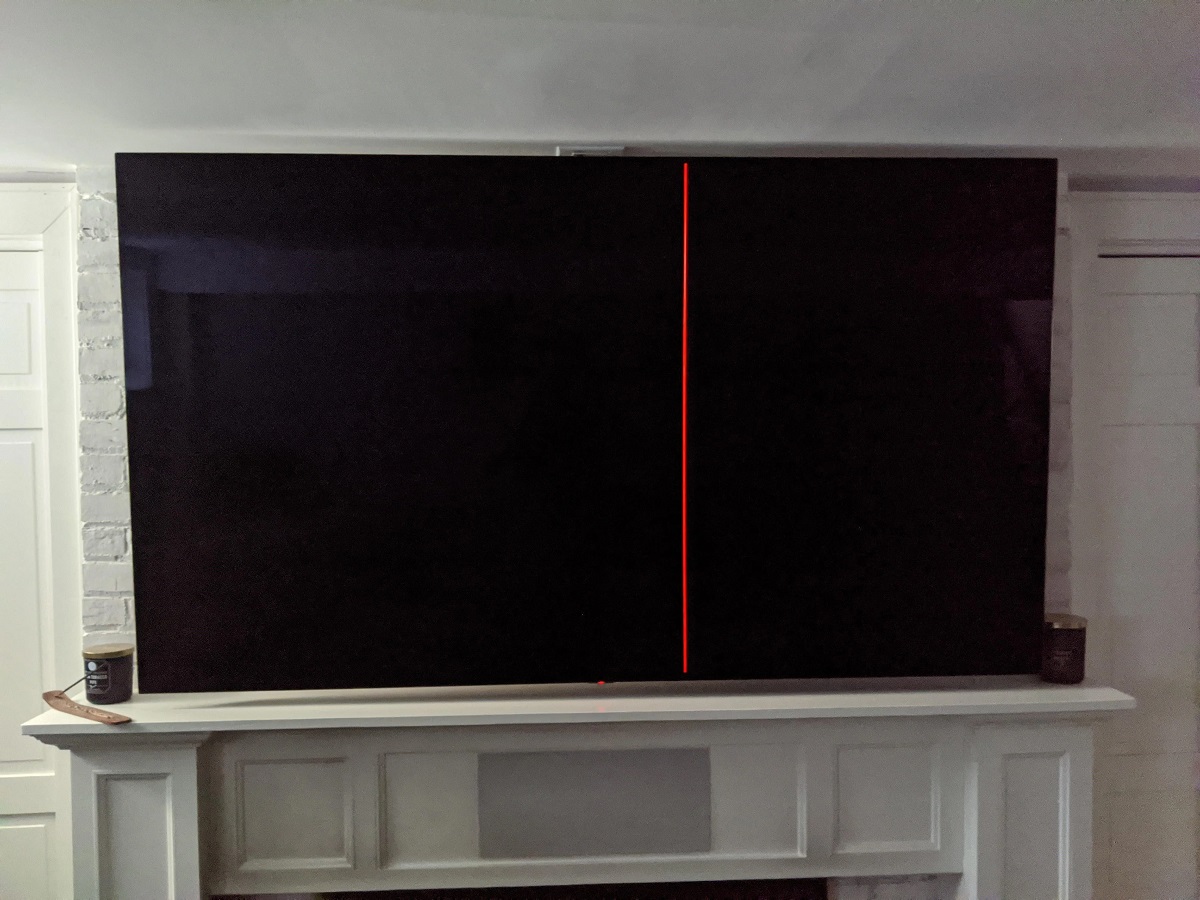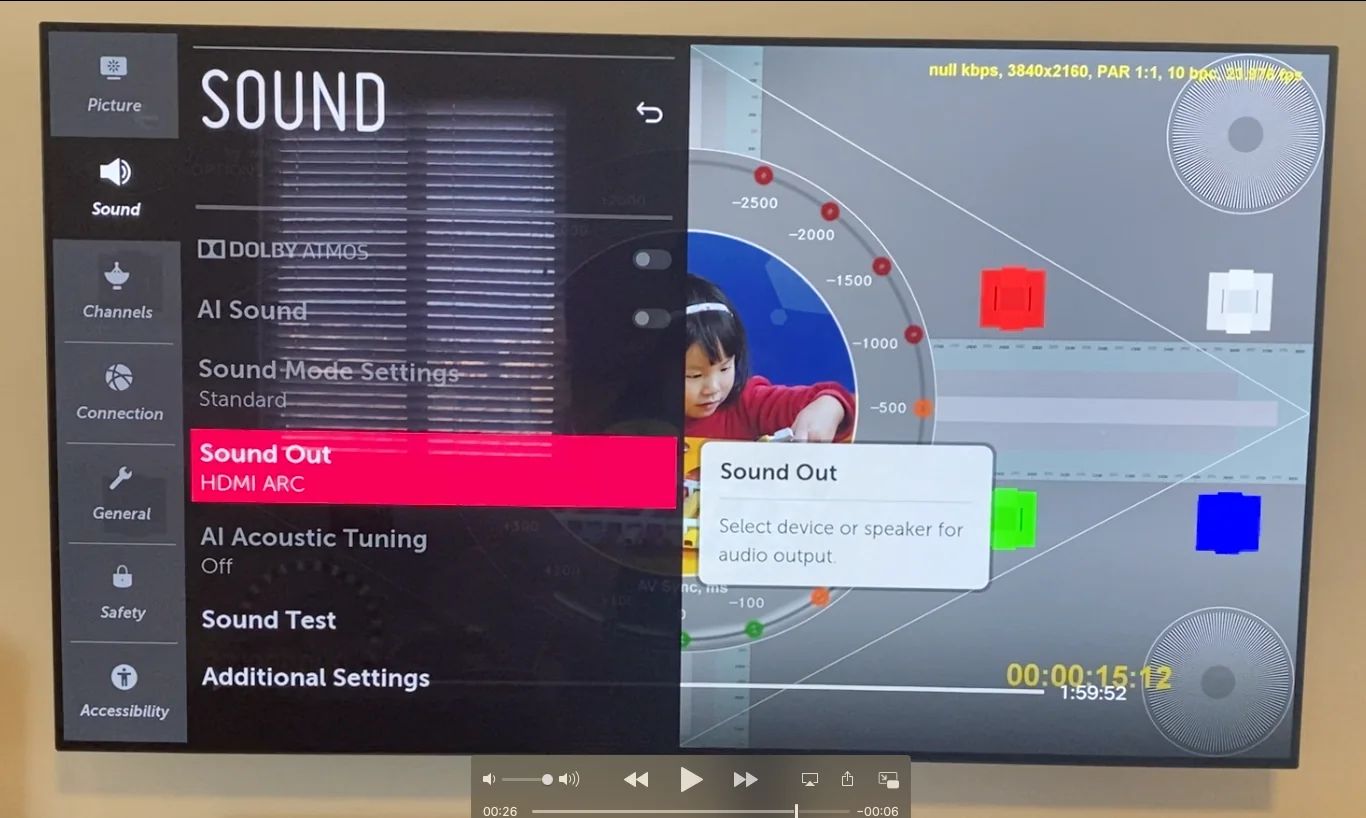Introduction
Welcome to the world of OLED TV, where stunning visuals and vibrant colors come to life on screen. OLED, or Organic Light Emitting Diode, is a cutting-edge display technology that is revolutionizing the way we experience entertainment in our homes. From the deepest blacks to the brightest whites, OLED offers a level of picture quality that is unparalleled in the industry.
In this article, we will explore what OLED is, how it works, and the advantages it offers over other display technologies. We will also delve into the key features of OLED TVs and compare them to LED, QLED, and LCD TVs. Whether you’re a tech enthusiast or simply someone looking to upgrade your entertainment setup, understanding the world of OLED will help you make an informed decision.
OLED technology has taken the TV market by storm, providing viewers with a viewing experience that is truly captivating. Unlike traditional LCD displays, OLED panels are composed of organic compounds that emit light when an electric current is applied to them. This self-emissive feature allows each individual pixel to switch on and off independently, resulting in perfect black levels and infinite contrast.
One of the main advantages of OLED technology is its ability to deliver exceptional color accuracy and vibrancy. Each pixel can emit its own light, producing vivid and lifelike colors with a wide color gamut. This makes OLED TVs a perfect choice for watching movies, sports, and playing video games, where capturing every detail and nuance is crucial.
Another key advantage of OLED is its ultra-thin and flexible design. OLED panels are made up of a thin layer of organic material that can be easily shaped and curved, allowing for innovative TV designs that blend seamlessly with your living space. Whether you want a flat screen or a curved display, OLED can cater to your preferences.
As we delve deeper into the world of OLED, you will discover the unique features and benefits of this technology and how it stacks up against other display options. So, let’s embark on a journey to explore the captivating world of OLED TV and elevate your home entertainment to new heights.
What is OLED?
OLED stands for Organic Light Emitting Diode, which is a display technology that utilizes organic compounds to emit light when an electric current is passed through them. Unlike traditional LCD screens that require a backlight, each individual pixel in an OLED TV emits its own light, resulting in unparalleled picture quality and contrast.
These organic compounds are arranged in thin layers between two conductors, with the bottom conductor being transparent to allow light to pass through. When an electric current is applied, the organic compounds emit light in response, producing the vibrant colors and deep black levels that OLED is known for.
One of the key components of OLED technology is the use of organic materials, such as carbon-based molecules. These materials have unique properties that allow them to emit light efficiently and precisely at the desired wavelengths. Additionally, OLED panels are composed of multiple layers, including the anode, organic layers, and cathode, which work together to control the flow of electricity and produce the desired colors.
There are two main types of OLED technology: small molecule OLED (SMOLED) and polymer OLED (POLED). SMOLEDs use small organic molecules that are vaporized and deposited onto the substrate, while POLEDs use polymers that can be dissolved and applied in a liquid form. Both types have their advantages and are used in various applications, including TVs, smartphones, and wearable devices.
One of the standout features of OLED technology is its ability to achieve perfect black levels. Since each pixel can independently switch on and off, OLED TVs can display true blacks by simply turning off the pixels in areas where black is required. This creates a striking contrast and enhances the overall visual experience.
Furthermore, OLED panels offer wide viewing angles, ensuring that the picture quality remains consistent, regardless of where you are seated in the room. This is particularly beneficial for group viewing, as everyone can enjoy accurate colors and sharp details from any position.
Overall, OLED technology represents a significant leap forward in display technology, offering exceptional picture quality, vibrant colors, and unparalleled contrast. Its self-emissive nature and wide viewing angles make it a top choice for those seeking a truly immersive home entertainment experience. In the next sections, we will explore the advantages of OLED in more detail and compare it to other popular display technologies.
How does OLED work?
OLED technology operates on the principle of electroluminescence, where the organic compounds within the display emit light when an electric current is applied to them. The functioning of OLED can be simplified into four key steps: electrical current flow, electron-hole recombination, light emission, and color filtering.
First, an electrical current is passed through a layer of organic materials called the emissive layer. This current flow is controlled by the thin-film transistor (TFT) backplane, which determines which pixels should be lit up and at what intensity. The backplane acts as a switch, allowing the electrical current to pass through specific pixels and create the desired image.
Within the emissive layer, a process called electron-hole recombination occurs. When the current reaches the layer, it causes electrons (negatively charged particles) to move from the cathode side to the anode side, while “holes” (positively charged particles) move in the opposite direction. When an electron meets a hole, they recombine, releasing energy in the form of light photons.
The light emitted from these electron-hole recombinations is what creates the pixels on the screen. Each pixel in an OLED display is made up of sub-pixels consisting of red, green, and blue (RGB) organic compounds. By varying the intensity of the electrical current flowing through each sub-pixel, the display can create a wide range of colors and shades.
Furthermore, OLED displays often incorporate a color filtering process to ensure accurate color reproduction. This involves using filters to selectively transmit or absorb specific wavelengths of light to create the desired color. By combining the RGB sub-pixels and manipulating the filters, OLED displays can reproduce a vast color gamut and achieve precise color accuracy.
Overall, the working principle of OLED technology revolves around electrical current flow, electron-hole recombination, light emission, and color filtering. These processes work together seamlessly to produce the vibrant and lifelike images that OLED displays are known for. The ability to control each pixel individually and generate true blacks sets OLED apart from other display technologies, creating a visually stunning viewing experience for the audience.
Advantages of OLED
OLED technology offers several distinct advantages over other display technologies, making it a popular choice for TVs, smartphones, and other electronic devices. Let’s explore some of the key advantages of OLED:
- Infinite Contrast: OLED displays are capable of achieving perfect black levels by simply turning off the pixels in areas where black is required. This creates a high contrast ratio, resulting in images that are rich in detail and depth. Whether you’re watching a thrilling action scene or admiring a beautiful landscape, OLED ensures that every shade of black is accurately reproduced, enhancing the overall visual experience.
- Vibrant Colors: Each pixel in an OLED display emits its own light, allowing for precise control over color reproduction. This results in vibrant, true-to-life colors with a wide color gamut. OLED displays can accurately reproduce even the most subtle shades, making images appear more lifelike and immersive. Whether you’re watching a movie, playing a game, or editing photos, OLED technology ensures that colors are accurately represented.
- Wide Viewing Angles: OLED displays offer excellent viewing angles, meaning that the picture quality and color accuracy remain consistent, regardless of your viewing position. This is particularly beneficial for group viewing, as everyone can enjoy sharp and accurate visuals from any seat in the room. You won’t have to worry about color shifting or loss of contrast as you move around, allowing everyone to have an optimal viewing experience.
- Fast Response Time: OLED displays have an incredibly fast response time, which means that they can quickly transition between different frames, resulting in smooth motion and reduced motion blur. This makes OLED ideal for watching fast-paced sports, playing action-packed video games, and enjoying high-speed content without any lag or ghosting. The fast response time ensures that every detail is captured accurately, enhancing the overall viewing experience.
- Thin and Flexible Design: OLED panels are ultra-thin and flexible, allowing for sleek and innovative designs. Unlike traditional LCD displays that require a backlight and additional layers, OLED displays can be made much thinner and can even be curved. This opens up possibilities for unique TV designs and allows for a seamless integration into any living space.
- Energy Efficient: OLED displays are energy efficient because they do not require a backlight. Unlike LCD displays that require a constant source of light, OLEDs only emit light when an electric current is applied. This results in lower power consumption and can contribute to energy savings over time.
In summary, OLED technology offers numerous advantages, including infinite contrast, vibrant colors, wide viewing angles, fast response time, thin and flexible design, and energy efficiency. These advantages contribute to an exceptional visual experience and make OLED displays a highly desirable choice for those seeking cutting-edge display technology.
Comparison with Other Display Technologies
When it comes to choosing a display technology, it’s essential to understand the differences and benefits that each option offers. Let’s compare OLED with other popular display technologies:
- OLED vs. LED: LED, or Light Emitting Diode, is a common display technology used in TVs and monitors. While both OLED and LED use light-emitting diodes, the key difference lies in how they produce light. LED displays use a backlight to illuminate the screen, which can lead to issues such as uneven lighting and limited contrast. OLED, on the other hand, emits light pixel by pixel, resulting in perfect blacks, infinite contrast, and more accurate color representation.
- OLED vs. QLED: QLED, or Quantum Dot LED, is a display technology used by various TV manufacturers. QLED utilizes quantum dots to enhance color performance and brightness. While QLED displays offer excellent color accuracy and high brightness levels, they typically do not achieve the same deep blacks and infinite contrast as OLED. OLED displays have an advantage when it comes to contrast ratio, viewing angles, and pixel-level control.
- OLED vs. LCD: LCD, or Liquid Crystal Display, has been a popular choice for TVs and monitors for many years. LCD displays use a backlight and liquid crystals to control the passage of light. While LCDs offer high brightness levels and are more affordable than OLED, they often have limited viewing angles and lower contrast ratios. OLED displays excel in contrast ratio, color accuracy, and viewing angles, making them a preferred choice for those seeking the best picture quality.
When comparing OLED to other technologies, it’s important to consider your specific needs and preferences. OLED’s ability to offer infinite contrast, vibrant colors, wide viewing angles, and fast response times makes it an excellent choice for those who prioritize picture quality and immersive viewing experiences. However, LED, QLED, and LCD displays may still be suitable for certain situations, depending on factors like budget, specific use cases, and personal preferences.
Ultimately, the choice between OLED and other display technologies will rely on your individual requirements and priorities. Take into consideration factors such as the viewing environment, desired picture quality, budget, and intended use of the display. By understanding the differences and benefits of each technology, you can make an informed decision and choose the display that best suits your needs.
OLED TV Features
OLED TVs come packed with a range of features that enhance the viewing experience and set them apart from other display options. Let’s explore some of the key features that make OLED TVs a top choice for discerning viewers:
- Perfect Black levels: One of the standout features of OLED technology is its ability to achieve perfect black levels. Each pixel can independently switch on and off, resulting in deep blacks and an infinite contrast ratio. This level of contrast brings out details in shadows and enhances the overall visual experience, making dark scenes appear more realistic and immersive.
- Wide Color Gamut: OLED displays offer a wide color gamut, which means they can reproduce a broad range of colors accurately. From vibrant, punchy hues to subtle and natural tones, OLED TVs excel in color accuracy, ensuring that every image is displayed with utmost precision. This feature is particularly beneficial for watching movies, gaming, and enjoying content that relies on accurate color representation.
- High Dynamic Range (HDR): Many OLED TVs are equipped with High Dynamic Range technology, which expands the range of luminance and color, resulting in more lifelike and dynamic visuals. HDR enhances the brightness, contrast, and color accuracy, allowing for a more immersive viewing experience. With HDR support, OLED TVs can deliver stunning visuals that showcase details in both bright and dark areas of the image.
- Ultra-Thin and Flexible Design: OLED panels are remarkably slim and flexible, allowing for sleek and modern TV designs. With their thin profile, OLED TVs can be mounted flush against the wall, providing a stylish and space-saving setup. Additionally, OLED’s flexible nature enables unique form factors, such as curved displays, giving viewers a more immersive and engaging experience.
- Fast Response Time: OLED technology offers an incredibly fast response time, ensuring smooth and blur-free motion. This is particularly important for fast-paced content like sports and action movies, where motion clarity is essential. OLED TVs can display rapid movements with exceptional precision, delivering a fluid and realistic viewing experience.
- Enhanced Viewing Angles: OLED displays provide wide viewing angles, allowing everyone in the room to enjoy an optimal viewing experience. Unlike other display technologies that suffer from color shifting or loss of contrast when viewed from off-center angles, OLED maintains consistent picture quality and color accuracy regardless of the viewing position. This makes OLED TVs ideal for large living spaces or for gatherings where everyone can enjoy the same level of visual excellence.
OLED TVs combine these impressive features to offer a viewing experience that is unmatched by other display technologies. Whether you’re a movie enthusiast, a gaming aficionado, or simply enjoy high-quality visuals, OLED TVs deliver stunning picture quality, vibrant colors, and an immersive viewing experience that will elevate your entertainment to new heights.
OLED vs. LED TV
OLED and LED are two popular display technologies found in modern TVs, but they have significant differences that can impact the viewing experience. Let’s compare OLED and LED TVs to understand their distinctions and determine which might be the better choice for you:
Picture Quality: OLED TVs have a distinct advantage when it comes to picture quality. Each pixel in an OLED display emits its own light, resulting in perfect blacks and infinite contrast. This creates a more immersive visual experience with enhanced detail and depth. LED TVs, on the other hand, rely on a backlight, which can lead to less accurate black levels and limited contrast. Overall, OLED displays excel in terms of color accuracy, contrast ratio, and overall picture quality.
Viewing Angles: OLED TVs offer wider viewing angles compared to LED TVs. With OLED, you can enjoy accurate colors and optimal picture quality from various seating positions, as the display maintains consistent performance regardless of where you are sitting. LED displays, however, may exhibit color shifting and reduced picture quality when viewed from off-center angles.
Response Time: OLED technology has a much faster response time compared to LED. This translates to smoother motion handling and fewer motion blur issues, making OLED ideal for fast-paced content like sports or action movies. LED displays may struggle to keep up with rapid movements, resulting in motion blur and less precise image rendering.
Design and Thickness: OLED TVs have a distinct advantage when it comes to design and thickness. OLED panels are incredibly thin and flexible, enabling manufacturers to create sleek and innovative designs. These TVs can be mounted flush against the wall or feature curved displays for a more immersive viewing experience. In contrast, LED TVs tend to be thicker due to the requirement for a backlight.
Energy Efficiency: LED TVs have an advantage in terms of energy efficiency. LED displays require less power to operate since they only need to light up the specific areas of the screen that are necessary. OLED displays, while more energy efficient compared to older display technologies like plasma, consume more power than LED due to the individual pixel lighting.
Cost: LED TVs are generally more affordable compared to OLED TVs. The mass production of LED displays has driven down the cost, making them a popular choice for budget-conscious consumers. OLED displays, on the other hand, are more expensive due to their advanced technology and manufacturing process. However, prices have been gradually decreasing as the technology becomes more widespread.
In summary, OLED and LED TVs have distinct characteristics that differentiate them in terms of picture quality, viewing angles, response time, design, energy efficiency, and cost. OLED offers superior picture quality with perfect blacks, vibrant colors, and wide viewing angles, while LED TVs are more affordable and offer decent performance. Assessing your priorities, budget, and requirements will help determine whether OLED’s impressive picture quality and unique features outweigh the cost considerations.
OLED vs. QLED TV
OLED and QLED are two prominent display technologies that offer significant advancements in picture quality compared to older options. Let’s compare OLED and QLED TVs to understand their differences and determine which might be the better choice for you:
Picture Quality: OLED and QLED TVs deliver excellent picture quality, but they achieve it in different ways. OLED TVs offer perfect blacks and infinite contrast, thanks to their ability to individually control each pixel’s light emission. This results in superior depth and detail in dark scenes. QLED TVs, on the other hand, utilize quantum dots to enhance color performance and brightness. While QLED displays excel in terms of color accuracy and brightness levels, they may not achieve the same deep blacks as OLED.
Viewing Angles: OLED technology has an advantage when it comes to wide viewing angles. With OLED, viewers can enjoy consistent picture quality and accurate colors from various seating positions. QLED displays, while they offer excellent picture quality when viewed head-on, may suffer from color shifting or loss of contrast when seen from off-center angles.
Brightness: QLED TVs generally have higher brightness levels compared to OLED TVs. They can produce brighter whites, which can be beneficial in rooms with high ambient light or for HDR content. However, it’s important to note that OLED technology can achieve perfect blacks, allowing for a higher contrast ratio, which can compensate for slightly lower brightness levels.
Response Time: OLED TVs have a significant advantage when it comes to response time. Due to their pixel-level control, OLED displays can switch on and off rapidly, resulting in faster response times and reduced motion blur. QLED displays generally have higher response times, which may lead to more noticeable motion blur, particularly in fast-paced content like sports or action movies.
Design: OLED TVs have a thin and flexible design, allowing for sleek and innovative form factors. Their thin profile enables wall mounting that sits nearly flush or curved designs for a more immersive viewing experience. QLED TVs, while they can come in slim designs, may be slightly thicker due to the need for a backlight. However, both technologies offer a range of design options to suit various aesthetic preferences.
Cost: QLED TVs are typically more affordable compared to OLED TVs. The mass production of QLED displays has contributed to an overall decrease in prices, making them a popular choice for consumers looking for budget-friendly options. OLED displays, on the other hand, tend to be more expensive due to the advanced technology and manufacturing process involved. However, prices for OLED TVs have been gradually decreasing as the technology becomes more widely adopted.
Ultimately, your decision between OLED and QLED will depend on your priorities and specific needs. OLED excels in contrast ratio, wide viewing angles, and motion handling, making it ideal for those who prioritize picture quality and immersive experiences. QLED offers excellent color accuracy, high brightness levels, and affordability, making it a solid choice for those seeking vibrant and bright visuals without breaking the bank.
OLED vs. LCD TV
OLED and LCD are two popular display technologies that offer distinct features and performance. Let’s compare OLED and LCD TVs to understand their differences and determine which might be the better choice for you:
Picture Quality: OLED TVs have an advantage when it comes to picture quality. Each pixel in an OLED display emits its own light, resulting in perfect blacks and infinite contrast. This creates vibrant colors, exceptional depth, and a more immersive viewing experience. LCD displays, on the other hand, rely on a backlight that can lead to less accurate black levels and limited contrast. Therefore, OLED displays typically provide superior picture quality.
Viewing Angles: OLED technology offers wider viewing angles compared to LCD displays. With OLED, you can enjoy accurate colors and optimal picture quality from various seating positions, as the display maintains consistent performance regardless of your viewing angle. LCD displays may suffer from color shifting and reduced picture quality when viewed from off-center angles.
Response Time: OLED TVs have a much faster response time compared to LCD displays. The individual pixel control of OLED technology enables rapid transitions between frames, resulting in smooth motion and reduced motion blur. LCD displays may exhibit slower response times, which can lead to more noticeable blur in fast-paced content, such as sports or action movies.
Contrast Ratio: OLED displays deliver a higher contrast ratio compared to LCD TVs. The ability of OLED to achieve perfect blacks enhances the overall contrast ratio, making images appear more vibrant and lifelike. LCD displays, although capable of producing bright colors, struggle to achieve the same level of contrast due to the limitations of their backlight technology.
Energy Efficiency: LCD TVs tend to be more energy efficient compared to OLED TVs. LCD displays can selectively block or transmit light using liquid crystals, allowing for energy savings. OLED displays, although they consume less power than older display technologies like plasma, use more power overall since each pixel emits its own light.
Price: LCD TVs are generally more affordable compared to OLED TVs. The mass production of LCD displays and their availability in various sizes and models contributes to their cost-effective nature. OLED displays, on the other hand, are more expensive due to their advanced technology and manufacturing process. However, the prices of OLED TVs have been gradually decreasing as the technology becomes more widespread.
In summary, OLED and LCD TVs have notable differences in terms of picture quality, viewing angles, response time, contrast ratio, energy efficiency, and price. OLED displays offer superior picture quality with perfect blacks, vibrant colors, and wide viewing angles. LCD displays are more affordable and can still provide decent overall performance. Consider your priorities, budget, and specific requirements to determine which technology aligns best with your preferences.
Conclusion
When it comes to choosing a TV, the decision often boils down to the display technology. OLED, with its self-emissive pixels, offers exceptional picture quality, vibrant colors, wide viewing angles, and fast response times. Its ability to achieve perfect blacks and infinite contrast sets OLED apart from other technologies, delivering a truly immersive visual experience.
LED, QLED, and LCD displays also have their merits, with advantages such as affordability, high brightness levels, and energy efficiency. However, they may not match the superior contrast, wide color gamut, and viewing angle performance of OLED.
It’s important to consider your specific needs, priorities, and budget when making a decision. If you prioritize picture quality and an immersive viewing experience, OLED TVs are an excellent choice. They excel in reproducing deep blacks, vibrant colors, and smooth motion, creating a lifelike and engaging visual experience.
However, if budget is a concern or you prefer brighter displays, LED, QLED, or LCD may be more suitable options. These technologies offer good performance and affordability, making them appealing for a wide range of consumers.
Regardless of the technology you choose, it’s worth noting that display technologies are constantly evolving. New advancements and improvements are introduced regularly, pushing the boundaries of what’s possible in terms of picture quality, color accuracy, and design.
At the end of the day, your personal preference and the viewing experience you desire will guide your decision. Whether you decide on OLED, LED, QLED, or LCD, enjoying your favorite movies, TV shows, and games on a high-quality display will undoubtedly enhance your entertainment experience.
So, take the time to research and compare the features of each technology, keeping in mind your specific requirements and budget. With the vast array of choices available in the market, you can find the perfect display technology that suits your needs, budget, and viewing preferences.







